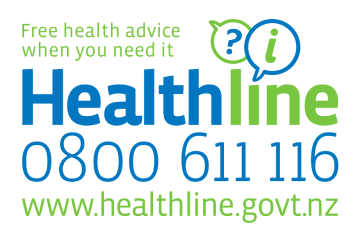First Aid For Sprains & Strains
First Aid For Sprains & Strains
Sprains and strains can occur after accidents, falls or during sports or physical activities. Learn more about how to manage your child's sprain or sports injury.
Key points about first aid for sprains and injuries
- sprains and strains are common in tamariki (children) because they are active
- sprains and strains can cause pain, swelling and bruising
- rest, ice, compression and elevation can speed up your child’s recovery
- tamariki should avoid heat packs, hot rubs, massage and exercise after an injury
- if your child’s symptoms are getting worse or you are worried that they may have a fracture, see a health professional
What are sprains and strains?
Sprains and strains are common because tamariki are active and enjoy rough-and-tumble play.
Sprain
A sprain is a tear in a ligament. A ligament is a tough fibrous cord that connects a bone to another bone at the joint. Sprains are usually caused by sudden forceful twisting of a joint.
Strain
A strain happens when a muscle or tendon is stretched or torn. A tendon is a strong fibrous cord that connects a muscle to a bone. Strains usually happen when a tight or weak muscle is overstretched.
Symptoms of sprains and strains
If your child has a sprain or strain they may experience the following:
- pain around the joint or muscle
- limited movement
- swelling
- bruising
Managing sprains or strains
If your child has a sprain or a strain, use RICER to help reduce swelling and to speed up their recovery. RICER stands for rest, ice, compression, elevation and referral. These are the steps to take following your child's injury.
Rest
After an injury, stop your child from moving the injured muscle or joint. If the injury occurs during physical activities or sports, stop them from what they are doing. It is important to rest the area as movement can increase bleeding and swelling.
Ice
Use an ice pack around the injury. Wrap the ice pack in a light cloth like a tea towel. Ice can help reduce pain and swelling. Apply ice for 15 to 20 minutes every 2 to 4 hours for up to 72 hours after the injury. If your child finds it painful, it’s OK to stop.
Compression
Bandage the area firmly (but not too tightly). Wrap the bandage around, above and below the injury. This helps to stop your child from moving the injured area too much.
Elevation
Keep the injury area elevated. If it is a leg injury, keep the leg above the hip by putting it up on a chair, pillow or stool. Use a sling for arm injuries.
Referral
If your child’s pain and swelling are not settling or they can’t use the muscle or joint, take them to the medical clinic to get checked by a health professional. The health professional may arrange scans such as an X-ray or ultrasound. Some tamariki may also need physiotherapy after their injury, depending on where and how bad the injury is.
See the KidsHealth section on x-rays and scans to learn more about scans.
Pain relief for sprains and strains
Your child may need simple pain relief, such as Paracetamol, to help manage their pain.
Paracetamol
If your child has pain, you can give paracetamol to make them more comfortable. You must follow the dosage instructions on the bottle. It is dangerous to give more than the recommended dose.
Other medicine
If your health professional gives your child ibuprofen (such as Nurofen or Fenpaed), or if you buy it at the pharmacy, follow the dosage instructions carefully. It is dangerous to give more than the recommended dose. Never give your child aspirin, as this may increase the risk of Reye syndrome, which is a rare and serious illness.
If simple pain medicine is not relieving your child’s pain, see a health professional. They may need further tests or stronger pain relief.
Things to avoid after a sprain or strain
In the 72 hours following an injury, it is important to avoid anything that may increase pain, swelling or bleeding around the injury.
In the 72 hours after your child has an injury:
- avoid applying heat, such as a heat pack, to the area
- avoid applying hot rubs
- limit them from doing exercise
- avoid massaging the area
Could my child have a fracture?
A fracture is a break in the bone. If you are worried your child could have a fracture, take them to a health professional.
See the KidsHealth page on fractures for more information.
When to get medical help for sprains and strains
If your child has ongoing pain that doesn’t improve with pain medicine or they have ongoing swelling and bruising, take them to see a health professional. They can review your child’s injury and refer your child for an X-ray if they are concerned that they have a fracture.
This page last reviewed 07 October 2024.
Do you have any feedback for KidsHealth?
If you have any feedback about the KidsHealth website, or have a suggestion for new content, please get in touch with us.
Email us now